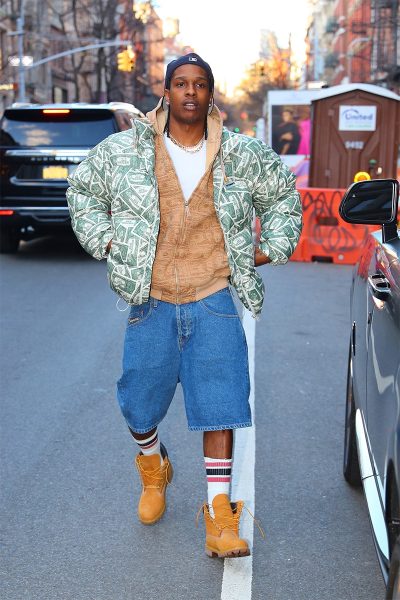The Disposable
Genetic disabilities, such as Cystic Fibrosis, Ehlers-Danlos, and Huntington’s are generally seen as negative attributes or burdens to bear. With mask mandates being lifted and many precautions exposing the disabled and chronic illness communities, and even further CRISPR technology being persecuted and encouraged, the question, remains, in selecting against genetic disability in the world of embryology, are we promoting a eugenic approach that aims to “clean” society of disabled individuals? The field of embryology has been around for a relatively short but poignant period of time. Through procedures like In Vitro Fertilization and Intracytoplasmic Sperm Injection, people who never could have dreamed to produce their own children are given a chance at parenthood. With new developments in the field, including batteries of genetic testing opportunities, parents are able to select an embryo to implant with knowledge of everything from its gender to its potential to develop any number of genetically marked conditions. This level of knowledge, however, presents a problem. Embryos that present with chromosomal abnormalities (such as Down Syndrome) and other “negative” gene marks are often rejected from implantation and discarded for research or as medical waste. By allowing the field to open up and give nearly everyone a chance at parenthood, every wanted embryo should have an equal chance at life.
The culture of the disabled community must be valued as something special and powerful. Disability in and of itself is not a death sentence or a term of life without parole. Disabled individuals are strongly bound in a community of mutual understanding and awareness. There is a “code of freaks” (Brudder, Gunnels) and strong unity that comes from being an outsider in one’s own world. Disabled culture is plentiful; “Disability can also be defined from a cultural framework” (Gilson & Depoy, 2000). The cultural view of disability presents the issue… …from the perspective of group identity distinct from other groups who do not share the disability identity (Mackelprang & Salsgiver, 1996). Pride is taken in the “unique talents and attributes of each individual,” grounding the person with a “positive disability identity” (Brown, 1995).” (Hopson). To take from the world all born-in or genetic disabilities would be a great disservice to society. Disabled people are individuals- just like anyone else- who can create, learn and explore their environment, even if it sometimes takes a bit of accommodation to do so. We should not write off potential people just because they might struggle more, struggle is the essential meaning of life. We shouldn’t discard potential people just because their story might be shorter than others; any story can be cut short and even one with very few pages can be immensely impactful. A disabled person is just as worthy of life as anyone else because they can enjoy life just as much as anyone else. This must be recognized.
“For this [acceptance] to be accomplished, there needs to be a fundamental change in how society treats and perceives disability as a whole. People with disabilities themselves have a vital role to play in changing the cultural representation of disability.” (Hopson). Leading a life with disabilities is challenging. At times it can even seem downright impossible. The challenges associated with disability, however, most often come from the inaccessibility of the world, not a human’s incompatibility with life. Without the presence of disabled people, no further work will meaningfully be done to make the world a more inclusive place to all abilities, even those we don’t consider traditionally disabled. Disability exists and persists far beyond the spectrum of chromosomal abnormalities and blips on the genome. The state of disability is a dynamic thing, something that without constant pruning (ableist killing) could never truly be “remedied”. Disability will always exist, so it makes no sense to try to eliminate it from birth. The very healthy child may get in a car crash and develop paralysis or cognitive deficits. The child with Huntington’s may die early but live fully. The point is, no one knows the destiny of any particular life, and any wanted embryo deserves the chance equally to experience that life. All children have the potential to create heartache and genetically modifying a child to fit exact specifications will not remove the incidents of random tragedies, later disability, or unplanned risk. It can be argued that a parent simply does not want to see their child die, a valid point and a reality for many parents of individuals with conditions like Cystic Fibrosis. However, eliminating one genetic defect by discarding the possibility of a wanted life does not safeguard a parent against watching that very horror play out.
A parent that is unwilling to raise a disabled child has no business being a parent. Over 10% of individuals in the US age 5-20 are disabled, and a good portion of those individuals are not born with their disability, but develop it later in life (Americans with Disabilities by Disability Type, Age, and Race, 2015). The possibility of disability is inescapable for everyone and is a reality that we must all face. Eliminating disability at birth does not rule it out by the time of death.
More recently, eugenics, flavored as liberal and acceptable has begun to become widely argued for amongst the scientific community. “For example, respected liberal moral philosophers have recently argued in favor of “liberal eugenics.” … they typically assert that it is permissible (and perhaps praiseworthy) for individuals to voluntarily determine their children’s genetic endowment.” (Harvard Law Review). This philosophy argues that parents have the intrinsic right to ensure their child’s genetic superiority and secure their lasting and genetically healthful future. In and of itself, this concept does not seem as outwardly evil as forced sterilization or ethnic cleansing; it, however, is still developed on the basis that society as a whole should be able to choose which individuals are qualified to be alive based on uncontrollable factors. It may be a slippery slope, but, who’s to say such genetic engineering won’t lead to the forced eradication of homosexuality if the specific “gay gene” is eventually identified. Simply put, when we start to determine the compatibility of life of wanted embryos based on their genetic prognosis, we run the risk of birthing barbie dolls, not human beings. We risk our very own unique humanity in trying to assert our children to have just the “right” version of being human. If everything is selected for, and preplanned, are you having a baby or playing an extremely life-like game of SIMS?
Some argue that “If you had the chance to decrease your child’s risk of a disease like diabetes and you didn’t, society would blame you” (Hayden), however, the principles aren’t as cut and dry as that. Would you willingly kill your child with diabetes and replace them with a typically “healthy” child? Likely not. People are not disposable simply because they have a disability. Embryos should not be considered disposable either. Genetic testing has progressed to the level where it currently can predict an embryo’s future likelihood for obesity and their eye color. Should one embryo and wanted baby be discarded over something as simple as the hue of their bright eyes? The argument then essentially comes down to, with the limited number of children that you will have, should all embryos, and thus all natural outcomes, be given an equal chance at life, or, should we allow personal preferences to play God.
Such processes are simply attempted cleansing of a population and should be treated as the farce that they are. Disabilities exist, and it is time that we embrace them as something unique and special, not as something to be feared or prevented against at all costs. Historically, choosing one embryo over another or using methods of “synthetic control” (Gietel-Basten), have had substantial negative effects, such as in the disastrous one-child policy in China which lead to female children being discarded. Imagine such a schema, but eliminating embryos even before they were babies to keep a population looking one specific way. Considering genetic diversity and gender balancing alone, it would be a nightmare for society to favor synthetic methods of genetic control.
Disabled lives are not disposable, and neither are the lives of disabled wanted embryos which deserve a chance at life just as much as anything else. All embryos, produced with the intent of bringing life into the world should be given an equal chance at survival and an equal opportunity to thrive, even if the world isn’t made specifically for them. With advancements in technology and monumental leaps being made every year, it is of paramount importance for governmental bodies to regulate and propose ethical guidelines for the choice of implantation of embryos. An embryo shouldn’t be simply selected against because its later care will take more consideration.





